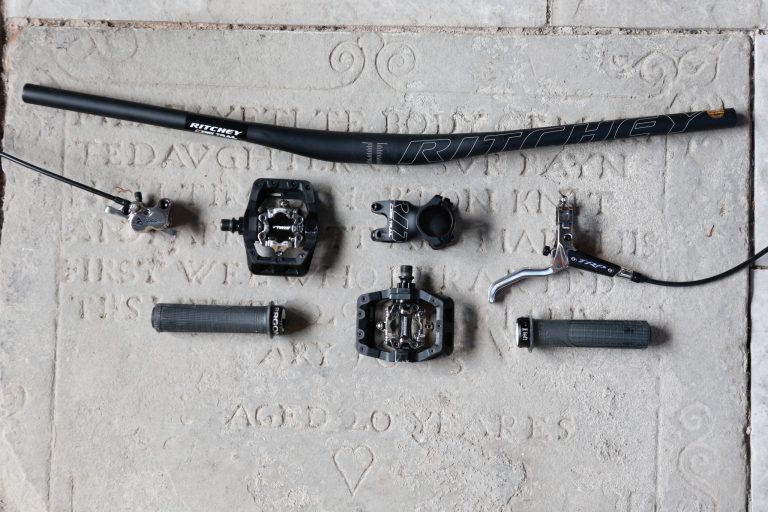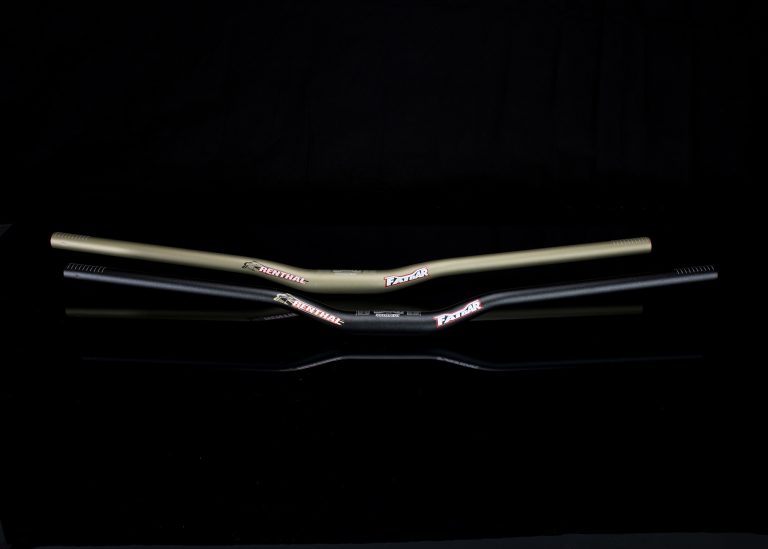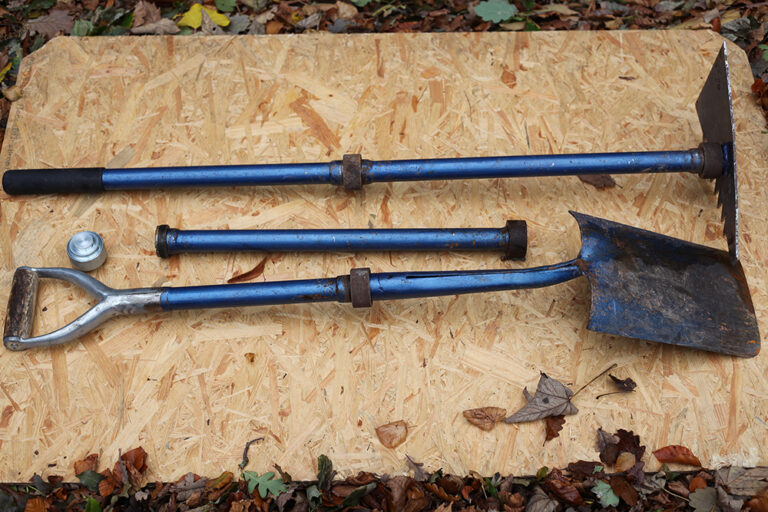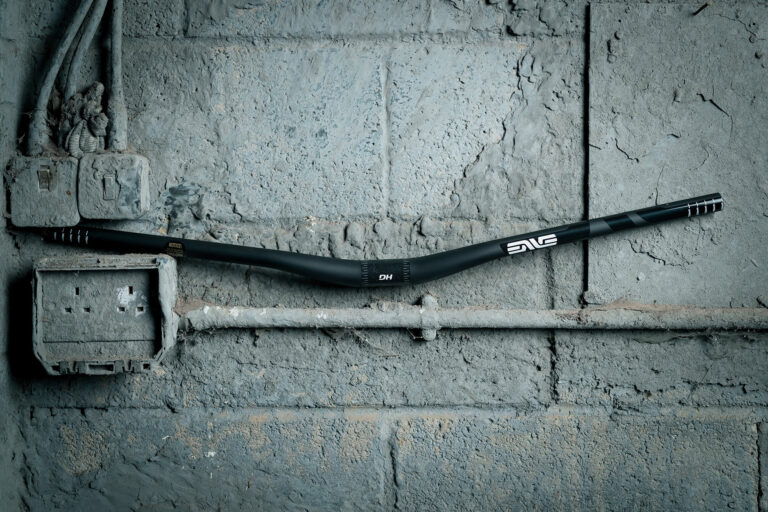
Words: Al Evans Photos: Andy Lloyd
Powa Products Dfender Review
Powa Products is a relatively new company that is headed by Fabien Barel, Chris Porter and Paul Walton – none of them needing any introductions. This is a promising starting point for any product, because you’re sure to know that it’s going to be thoroughly thought out, well made and tested by one of the best riders on the planet. Powa Products boasts an entirely UK-based manufacturing, development and shipping processes; another brownie point from the patriots amongst us. I, and Mother Nature, have been giving the Dfender a good amount of wet, sloppy abuse, to see how it fares in tough conditions.
First Impressions
At first glance the mudguard looks well made, it is smooth and well finished. There are no moulding marks left on its surface and it looks like a high quality product with a glossy finish. Its shape is reminiscent of a Tron-esque motorbike fender; it definitely appears to be futuristic and sleek. The other thing you notice is its weight – a portly 160-ish grams – but with this comes another observation; it has a firm feel, and coupled with the high quality mounting hardware used to attach it to your fork’s brace you get the impression that it is going to be on your bike for the long-haul.
Details
Specifically, when taking the fender out of the box you notice the intelligently thought-out mounting system – it uses lugs on a metal bracket, holes, rubber grommets, a nut and a threaded rod. This all combines (see tutorial video below) and joins together in a Lego-like way allowing mounting of the fender to your fork. In the box, also included, was a number of different mounting systems for different forks; stamped lettering differentiates Fox, Rock Shox and other brands. The mounting system is made mostly from metal, which is where the lugs are found, clipping into the plastic of the mudguard. There is a rubber grommet that fits around the fork brace. This is used to avoid paint damage and also allows the fender to be tightened up securely, using the nut and threaded rod. The way the mudguard has been moulded and shaped helps to retain its form and adds to the stiffness. This reflects the shape of the tyre, with the guard being closer at the front of the tyre than at the back.
Opinion and Ride
The first place to start is with how the mudguard mates to your bike. I’m not an especially technically minded guy, but can service my own forks and build wheels and hit things with hammers. So with that said, I found the initial fitment of the Dfender quite hard – locating the correct metal mounting part was not as easy as the aforementioned stamped brand-designation sounds. After some trial and error I found the correct one and fumbled my way through the fitment. The next hurdle was the nut that needs to be inserted under the mudguard – it was hard to locate the nut and the threaded rod kept dislodging it. The best technique was to not drive the nut home, leave it out and turn it on to the rod. But, with the guard finally semi-fitted, a few turns on the threaded rod and it clamped up a treat, firmly held in place. Just to make sure that it wasn’t me that was causing the mounting issues, I proceeded to remove it from the forks and refit it. It was, admittedly, easier, but still quite a fiddly process.
An interesting problem arises from bike transportation – if you leave the wheels on your bike when transporting it in the car, you need not worry. However, if you take them off to put the bike in the boot, then it is important to note that the weight of the bike can twist the mudguard. The test unit, after being left in the boot for a few days on the bike, bent out of shape and required some firm man-handling and a bit of heat to find its original form. This is not necessarily a criticism but is something to be careful of, considering the cost of the Dfender. However, this does illustrate the Dfender’s resilience to (my) stupidity and ability to ‘hit things with hammers’ – something that transfers to toughness on the bike. The Dfender got bent, but returned to its original shape without permanent damage.

The protection from mud it offers is, quite frankly, brilliant. It keeps the front one third of your bike clean and your goggles and face stay almost spotless even in the dirtiest, wettest and most disgusting of conditions. So much so, when riding with an open face helmet, I ditched my goggles in favour of just using the mudguard. It does stop, not just reduce, mud getting into your eyes and spoiling riding. The trickiness of fitment is hugely outweighed by its high-calibre mud protection.
The Dfender’s close proximity to the tyre did cause me to be sceptical – I was expecting buzz on every jump, turn or rough patch of track. However, the rigidity of the guard means it holds its shape and even the hardest of cases or bottom-outs it does not foul the tyre. The only point at which it did hit the tyre was when the track became very rough; multiple, successive, harsh bumps caused buzzing and deformation of the Dfender. However, it did not get dislodged or misshapen permanently and it did not appear to affect my riding. The audible buzz could, for some, be off-putting.
Another important consideration is the size of the Dfender. This has the potential to affect the way bikes are mounted to chairlifts using the front wheel, like in Les Gets or Chatel. Potentially, the large size and shape could render it incompatible with Alpine uplifts, and therefore riding. The Marsh Guard does not encounter this problem and is flexible enough to spring back into shape if the bracket squashes it. This is something to consider when thinking about where you’re going to be riding.

So, compared to a Marsh Guard or similar, is it worth the extra money? That is a tough question to answer and I think there is a lack of equivalency between the products – the Marsh Guard is a disposable solution, and the Dfender is a permanent fix. The Marsh Guard’s simplicity, ease of fitment, weight (31g), price (€11) and non-consequential disposal (through damage, or whatever) appeals, and its elegance shines through its distinct lack of complication. On the other hand, then, the Dfender is a highly-strung and ‘complicated’ mudguard that is less disposable, weighs more but offers better and fuller protection and will be more consistent in bad weather conditions, but is more costly (£49).
Conclusion
The Dfender is a high-value solution to mud-protection; it excels at keeping mud off your face and out of your eyes. It doesn’t flex when subjected to abuse and looks pretty good. However, it is heavier than other, simpler, offerings, and is considerably more expensive. It is not easy to choose between the varieties of offerings for mud-defence. However, if you like a bit of bike-bling and privilege mud-protection over weight, then the Dfender is certainly for you. It’s a good, well thought-out, solid product and you would expect no less from the people that designed it.
Price: £49





